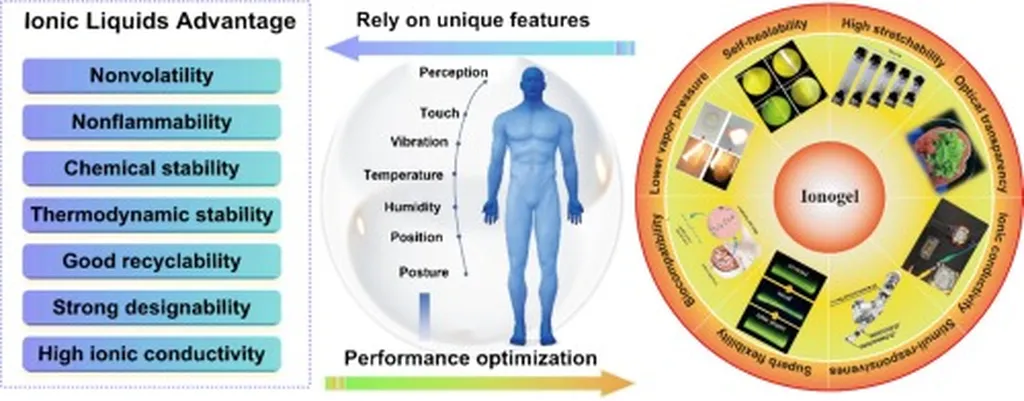In the realm of advanced materials, a breakthrough is making waves, promising to revolutionize flexible electronics and sensing technologies. Researchers, led by ZHANG Peiduan from the School of Textile Science and Engineering at Tiangong University in Tianjin, China, have published a comprehensive review in *Cailiao gongcheng* (translated to *Materials Engineering*), shedding light on the remarkable potential of ionogel materials. These innovative substances are poised to transform industries, particularly in energy and wearable technologies.
Ionogels are a unique class of materials that combine the best of both worlds: the stability of solids and the conductivity of liquids. Composed of ionic liquids dispersed within organic or inorganic networks, they boast exceptional chemical, electrical, and thermal stability, along with wide electrochemical windows. “The biphasic nature of ionogels makes them incredibly versatile,” explains ZHANG. “They can be tailored for a wide range of applications, from flexible electronic devices to wearable sensors.”
The review delves into the structural characteristics and component properties of ionogels, highlighting how different materials can modify and enhance their performance. This adaptability is crucial for developing next-generation technologies. For instance, in the energy sector, ionogels could lead to more efficient and durable energy storage solutions. Their flexibility and stability make them ideal for use in batteries and supercapacitors, which are essential for renewable energy systems.
Moreover, ionogels are set to redefine wearable technology. Imagine a future where your clothing monitors your health, assesses your movement quality, and interacts seamlessly with computers. “The potential for personalized health monitoring and human-computer interaction is immense,” says ZHANG. “Ionogels can enable the creation of lightweight, comfortable, and highly sensitive wearable devices.”
The review also discusses the application of ionogel materials in marker detection, which could have significant implications for environmental monitoring and industrial safety. By detecting chemical compositions with high accuracy, these materials can help in identifying pollutants and ensuring workplace safety.
However, the journey is not without challenges. The review outlines future design strategies and potential hurdles that researchers need to overcome to fully harness the capabilities of ionogel materials. “While the potential is vast, we need to address issues related to scalability, cost-effectiveness, and long-term stability,” ZHANG notes. “But with continued research and innovation, we are confident that ionogels will play a pivotal role in shaping the future of flexible electronics and sensing technologies.”
As the world moves towards a more interconnected and technologically advanced future, the research published in *Cailiao gongcheng* offers a glimpse into the possibilities that ionogel materials hold. From energy storage to wearable health monitors, the applications are as diverse as they are transformative. The work of ZHANG and their team is not just a step forward in materials science; it’s a leap towards a smarter, safer, and more efficient world.

